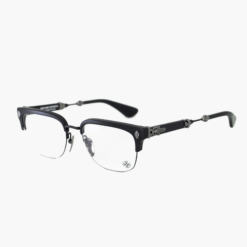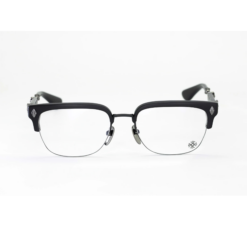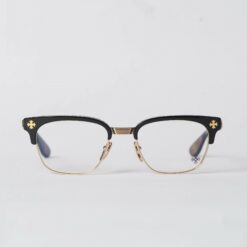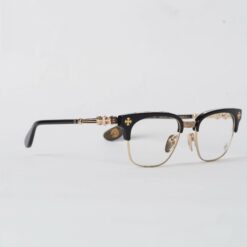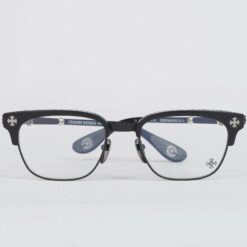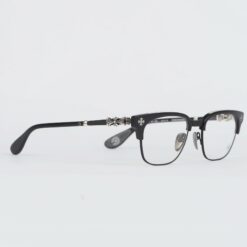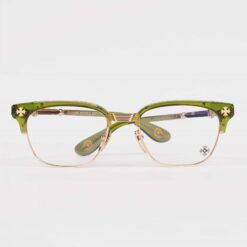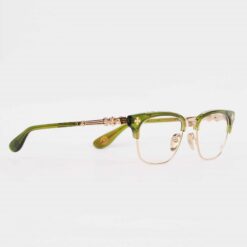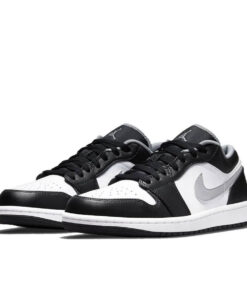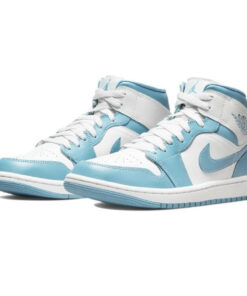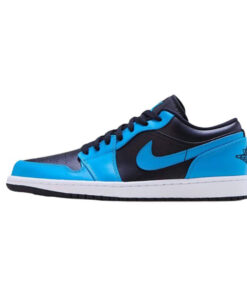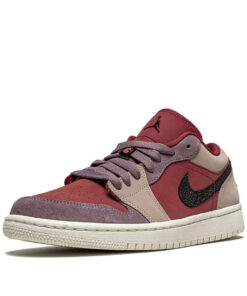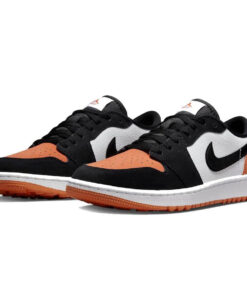trending fashion
Wing Chun: Philosophy, Forms, Techniques, and Movies
Chrome Hearts Glasses
Chrome Hearts Glasses
Chrome Hearts Glasses
Chrome Hearts Glasses
Check our Latest products!
Wing Chun
Wing Chun is a Chinese martial art made famous around the world by the late Bruce Lee. Ask any practitioner about what motivated them to study the art, and the martial arts movie star will inevitably be mentioned, often sooner rather than later. Bruce Lee did a great service to the world martial arts community by bringing Wing Chun into the spotlight, as its philosophy and techniques are worth knowing for any fighter. In this article, we’ll take a look at the often murky history behind the style, as well as the techniques and forms unique to it. Let’s get started!
History
Not much is known concerning the history of the art, except for the myth told by one of its most famous practitioners, and Bruce Lee’s teacher, Yip Man. According to the venerated grandmaster, the story began with the young woman Yim Wing Chun, who lived in Southern China during the period when the Qing Dynasty destroyed the temples of the Southern Shaolin. A local warlord asked for her hand in marriage and she refused, drawing his ire. Hoping to avoid his wrath falling upon her loved ones, she said she would reconsider if he could beat her in a fight, at a later date. He being big and strong and she small and weak, he laughed at her challenge, accepted, and said he would begin drawing up wedding plans.
She did not know how to fight, but soon crossed paths with a Shaolin nun, and survivor of the Qing slaughter, Ng Mui. Ng Mui taught Wing Chun a new style, based upon a fight between a crane and a snake and her own knowledge of Shaolin Kung Fu. Having learned the art, she was able to best the warlord in a fight, marry her true love, continue the spread of her new martial art, and live as happily as one realistically could in 17th century China.
Philosophy
While the exact accuracy of the origin story is questionable, one important detail must be taken from it in order to truly understand the martial art: it was founded by a small woman who needed to beat a large man in a fight. From this crucial fact stems many of the techniques, aims, and purposes of Wing Chun, and must be kept in mind: the great warrior does not need to appear fearsome, nor are they brought to combat by anger. The fighter must always be cool and level-headed, aiming not to out-muscle or out-pummel their opponent, but to use their enemy’s own strength against them. In this way, Wing Chun allows far smaller, weaker fighters to defeat larger, more powerful foes.
Interestingly, Wing Chun shares many similarities with the Japanese martial art Aikido in this respect.
Stances
A key to Wing Chun is proper stance, as well as all of the things that go into that. The analogy often used is that one’s stance must be like a piece of bamboo: firm, yet flexible; rooted, but also yielding. External force is either deflected or redirected.
The stance most favored is high and narrow, with elbows kept close to the body. This positions the arms to cover the vital organs, along the centerline of the body (discussed later). This stance is inherently defensive, and this is intentional, as the key is to not allow openings or expose weaknesses.
An important aspect of stance is balance, as proper balance allows the body to recover faster and maintain its structure. Wing Chun trains its practitioners to properly understand their body and truly “feel” how its muscles, tendons, and blood work. Wing Chun forms such as Chum Kiu and use of the wooden-dummy, both to be discussed later, help train the fighter towards this end.
Further, muscular relaxation is a critical. Muscles need to be relaxed for both offensive and defensive purposes. Tensed muscles waste energy, and provide points of weakness if the opponent chooses to grab your arm. Relaxed muscles are able to exert more energy in a punch, and are also, as the Chinese mystics hold it, more conducive to chi, or vital life force.
The Centerline
The concept of the centerline is, if you’ll pardon the pun, central to Wing Chun. Although there is some controversy over exact definitions and locations, the centerline is most often held to run vertically down the center of the body, from the top of the head to the base of the groin. This is believed to be the prime corridor of Chi in the body, and therefore disrupting it with a well-aimed punch would do the most damage. Consequently, Wing Chun practitioners aim to defend their own centerline while attacking their opponent as close to their centerline as possible.
The Centerline most often includes the eyes, nose, throat, solar plexus, stomach, pelvis, and groin.
Techniques
Punches: The straight punch is the most common attack in Wing Chun. Knuckle positioning varies, from using the top two knuckles, the middle two, or the bottom three for extra power, often with a pivot right before the punch connects. Punches can be thrown in rapid succession, called chain punching, which is a staple of Wing Chun. Crucially, punches are thrown from the shoulder and the body, not the arm, for added power and stability.
The analogy often employed in Wing Chun is the idea of the hammer and the nail: the body is the hammer, and the fist the nail. A Wing Chun practitioner moves their body in closer and closer to their opponent, driving their fist forward with each step as one would use a hammer to drive in a nail.
Punches are made from an upright position with the fists in front, without “cocking” the elbow back. The elbows are kept low and close to the body, not driven back in order to protect the body and allow fewer openings for the opponent to exploit. Wing Chun is often criticized for this, as it’s claimed that his gives less power to each punch, but this can be made up for by employing chain punches, a rapid succession of blows that unbalance the opponent. Further, skilled practitioners are able to generate “short power”, or a lot of power in a short space. A popular demonstration of this is the “one-inch punch”, which starts only one inch away from the target yet can deliver a large amount of force, such as breaking a board or knocking an opponent off their feet.
Kicks: Unlike in many other martial arts, high kicks to the upper body are rare in Wing Chun, as this would expose the practitioner’s centerline and knock them off balance. Instead, kicks are aimed to the lower body and the legs, used to knock the opponent off balance, bring them to their knees, or break their legs. Kicks are often used defensively as well as offensively, similar to Muay Thai, to block an opponent’s kick while delivering your own.
Uncommitted Attacks: In Wing Chun, attacks are uncommitted, meaning the practitioner’s balance or position is less if the attack fails to connect. Instead, the fighter can flow into a follow-up attack, stringing them together to form a chain. This method is used to gradually break down an opponent’s defenses, instead of all at once with a massive attack.
Close Range: Wing Chun is essentially a close range fighting style, based upon advancing quickly and striking at close range. Wing Chun employs entry techniques such as long-range kicks, meant to get past an opponent’s defenses to hit them with close range attacks. Staying true to the principles of Wing Chun, this allows a smaller person with a shorter range to beat a larger opponent with a longer range by getting inside their range and attacking them where they can’t reach, close to their body.
Forms
There are six forms in Wing Chun, 3 of which are unarmed, one using a wooden dummy, and two weapon forms. Forms are not used directly for combat, but are rather meditative exercises meant to build balance, self-awareness, and relaxation.
Empty-handed forms:
Siu Lim Tao: Translates as “little idea”, this is commonly viewed as the “seed” from which all other forms emerge. Balance, body structure, and fighting stance are developed.
Chum Kiu: Translates as “seeking the bridge”, it teaches one to bridge the gap between practitioner and opponent through entry techniques and movement of the body, as well as recovering Siu Lim Tao where the centerline has been compromised. Chum Kiu is the form in which attacks are taught.
Biu Jee: The third form is translates as “darting fingers”, this form utilizes extremely short-range techniques, like short-range elbow strikes and finger jabs to the throat. This is often thought of as the killing art of Wing Chun, and shouldn’t be used unless absolutely necessary.
Wooden-dummy form:
Muk-Yan Jong: Translates directly into “wooden dummy”, this form is performed, predictably, against the iconic wooden dummy, which is a thick wooden post with three “arms” and a “leg” and with a slight spring to it, representing the energy of the human form. Training with the dummy improves the practitioner’s understanding of angles and positioning, and is used to understand the empty-handed forms in their totality.
The wooden dummy was based off the design of 108 Shaolin dummies, each representing a possible form the opponent may take. All 108 of these forms are combined in the wooden dummy, allowing for great variety when training with it.
Training with the wooden dummy incorporates all elements of Wing Chun, and teaches proper angles of deflection, speed, power, flow, accuracy, balance, timing, mobility, and positioning. Most of all, the training teaches toughness, as constantly beating your arms and legs against a wooden post, even if it is often padded, develops the skin and muscles. As a crucial element of the martial art is blocking kicks and punches with the palms, forearms, and legs, training with the wooden dummy is essential in hardening up the body.
Weapons Forms:
Once the standard empty handed forms have been used and one learns to transmit power to the ends of his fingertips, the next step is to learn to transmit power through a weapon. The weapon, like in Japanese Martial Arts, Kobudo, and Filipino Martial Arts, is seen as merely an extension of the body. ‘
Yee Jee Seung Do: Involves a pair of butterfly knives, known historically as “life-taking knives”. Consistent with other elements of Wing Chun, these knives are short range, shorter in length than any short sword.
Luk Dim Boon Gwun: Different from standard Wing Chun practice, this form uses a very long pole, which can range from 8 ft in length all the way up to 13 feet, sometimes called the Dragon Pole or the Six and A Half Point pole. Training with this weapon uses all of the principles of unarmed combat as well (uprooting, expanding, circling, shocking, deflecting, cutting-down, and flowing, with flow being the “half point”), and the use of such an ungainly weapon helps to develop balance.
Exercises
Chai Sao: This exercise is meant to increase the ability of Wing Chun practitioner’s to sense changes in body mechanics, momentum, pressure, and feel. It involves two practitioner’s keeping in contact with each-others’ forearms while executing Wing Chun techniques. The increased sensitivity allows a practitioner to better sense their opponent and predict their actions on an unconscious level, increasing the precision and speed of attacks and counters.
Chi Gerk: Similar to Chai Sao, but with legs instead of arms. Contact is maintained at the shins.
Famous Practitioners
Yim Wing Chun: Perhaps an actual historical figure, or maybe just a woman of legend, Yim Wing Chun started the martial art, and it is now named after her. Pretty bad ass.
Yip Man: The Chinese grandmaster of Wing Chun, teacher of Bruce Lee and many others.
Donnie Yen: Film maker and film star, played Yip Man in the famous Ip Man movies.
Bruce Lee: The movie star needs no introduction, perhaps the greatest force responsible for the spread of Wing Chun.
Brandon Lee: Son of Bruce Lee and also a movie star, trained in Wing Chung as well as Muay Thai and Shaolin Kung Fu
Jackie Chan: The legendary Hong Kong born movie star, Jackie Chan is a master of Wing Chun, Kung Fu, and comedy.
Famous Wing Chun Movies
Below is a list of Wing Chun movies, or movies which include elements of Wing Chun, as well as a brief description from IMDB. I know you’ll watch them, so enjoy!
Ip Man w/Donnie Yen: A semi-biographical account of Yip Man, the successful martial arts master who taught the Chinese martial art of Wing Chun to the world.
Ip Man 2 w/Donnie Yen: Centering on Ip Man’s migration to Hong Kong in 1949 as he attempts to propagate his discipline of Wing Chun martial arts.
Ip Man 3: When a band of brutal gangsters led by a crooked property developer make a play to take over the city, Master Ip is forced to take a stand.
The Legend is Born: Ip Man w/ Donnie Yen: Yip Man’s resistance against invading foreigners, along with his romantic relations while under the tutelage of three Wing Chun masters.
Ip Man: The Final Fight: In postwar Hong Kong, legendary Wing Chun grandmaster Ip Man is reluctantly called into action once more, when what begin as simple challenges from rival kung fu styles soon draw him into the dark and dangerous underworld of the Triads. Now, to defend life and honor, he has no choice but to fight one last time…
The Prodigal Son: A rich man’s son (Yuen Biao) believes himself to be the best kung fu fighter in Canton. Unfortunately, his father, anxious for his son’s safety, bribes all his opponents to lose. After a humiliating defeat at the hands of an actor in a traveling theatre company, the son resolves to find a better teacher. Furious kung fu battles and slapstick comedy.
Wing Chun: Wing Chun, a woman living in a remote village often pillaged by robbers. When Wing Chun finally loses her cool and defeats them, her heroic actions stir up even more trouble in this male-based society of the time. The climactic battle to the death is a dazzler.
Kung Fu Wing Chun: A romantic comedy about the origins of the Wing Chun fighting style.
The Grandmasters: The story of martial-arts master Ip Man, the man who trained Bruce Lee.
Enter The Dragon w/ Bruce Lee: A martial artist agrees to spy on a reclusive crime lord using his invitation to a tournament there as cover.
Twin Dragons w/ Jackie Chan: Two twins are separated at birth, one becoming a streetwise mechanic and the other an acclaimed classical concert conductor. Finally meeting in adulthood they each become mistaken for the other and entangled in each other’s world.
Rumble in the Bronx w/ Jackie Chan: A young man visiting and helping his uncle in New York City finds himself forced to fight a street gang and the mob with his martial art skills.
Bangkok Dangerous w/ Nicholas Cage: A hitman who’s in Bangkok to pull off a series of jobs violates his personal code when he falls for a local woman and bonds with his errand boy.
[ad_2] Write by Mạnh Hà
